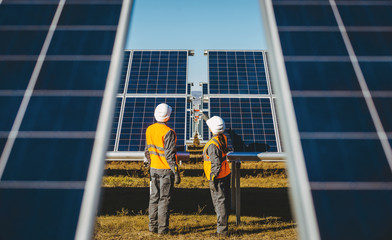A roof is one of the most essential structures of any property, serving as the primary defense against harsh weather conditions and environmental stressors. Because it plays a crucial role in maintaining comfort, safety, and structural integrity, taking care of the roof should be a top priority for property owners. When roofing concerns arise—whether it’s damage, aging materials, or unexpected leaks—some may consider handling repairs or replacements themselves. However, the benefits of hiring a professional Bears Valley Roofing Company far outweigh the perceived convenience of a DIY approach. Skilled roofers bring expertise, proper tools, safety knowledge, and high-quality workmanship that can extend the lifespan of a roof and protect the property for many years.

One of the most valuable advantages of hiring a professional roofing company is the expertise that trained roofers bring to every project. Roofing systems are complex, consisting of layers that work together to create a strong protective barrier. Professionals understand the structural requirements, material compatibility, and installation techniques that ensure long-term performance. They can quickly identify the root cause of a roofing issue, whether it is related to aging shingles, improper installations, moisture buildup, or storm-induced damage. Without this level of knowledge, property owners risk misdiagnosing the problem and unintentionally causing more damage. Professional roofers offer accurate assessments that lead to effective solutions rather than temporary fixes.
Another major benefit of hiring a professional roofing company is the assurance of quality workmanship. The longevity and effectiveness of a roof heavily depend on proper installation and repairs that meet industry standards. Professional roofers undergo extensive training to ensure their techniques meet safety codes and manufacturer specifications. They know how to secure materials, create watertight seals, and prevent common issues like leaks, uplift, or premature wear. High-quality craftsmanship not only protects the property but also enhances the roof’s ability to withstand severe weather conditions. By relying on experienced roofing specialists, property owners gain peace of mind knowing the work has been completed correctly and will hold up over time.
Safety is another critical reason to hire a professional roofing company. Roofing projects naturally involve significant risks, including falls, structural hazards, and improper handling of tools. Professional roofers are trained to work safely at elevated heights, follow safety protocols, and use specialized equipment designed for roofing tasks. They also understand how to navigate steep slopes and unstable surfaces while maintaining balance and precision. Attempting to repair or replace a roof without proper experience and equipment can lead to serious injuries. By entrusting the job to professionals, property owners eliminate unnecessary risks and ensure the project is completed safely and efficiently.
Hiring a professional roofing company also helps ensure compliance with industry standards and regulations. Roofing installations must meet specific codes that are designed to maintain structural integrity and protect occupants. These requirements often involve proper ventilation, material compatibility, and secure fastening methods. Professionals stay updated on current guidelines to guarantee each project meets the necessary compliance standards. Attempting roofing work without this knowledge can lead to code violations, costly mistakes, and potential issues when selling the property later on. Working with trained roofers ensures the project is performed according to best practices and structural requirements.
Another important benefit of hiring a professional roofing company is access to high-quality materials. Roofing specialists have experience with a wide range of materials and can recommend the best options based on the property’s needs, climate patterns, and budget preferences. They also know which materials offer enhanced durability, improved energy efficiency, and long-term reliability. Many roofing companies have established relationships with suppliers, allowing them to source premium materials at competitive rates. This is particularly advantageous for property owners who want long-lasting performance without overspending. Using high-quality materials installed by trained professionals helps extend the life of the roof and reduce the need for frequent repairs.
Professional roofing companies also offer warranties that protect property owners from unexpected issues. These warranties often cover both materials and workmanship, providing additional reassurance that the investment is well-protected. If problems arise due to installation errors or material defects, the roofing company typically handles the necessary repairs at no additional cost. DIY projects or unlicensed labor rarely include such assurances, leaving property owners vulnerable to paying out of pocket for future problems. With a professional warranty in place, property owners gain financial protection and long-term peace of mind.
Efficiency is another significant advantage of working with a professional roofing company. Roofing projects—especially replacements—can be time-consuming and complicated for those without experience. Professional roofers use advanced equipment, established techniques, and coordinated team efforts to complete projects in a timely manner. They understand how to sequence tasks efficiently to ensure the roof is installed or repaired with minimal disruption to daily routines. This level of organization helps prevent delays that could expose the property to rain, debris, or structural vulnerabilities. By hiring experts, property owners benefit from timely completion without sacrificing quality.
Roof inspections performed by professionals can also reveal underlying issues that are often overlooked during DIY attempts. Hidden problems such as moisture accumulation, ventilation inconsistencies, or structural weaknesses can compromise the roof’s long-term performance. Professional roofers have the training to detect subtle signs of deterioration and provide preventive solutions that protect the property from future damage. Addressing potential issues early on can save property owners from costly repairs or premature roof replacements. Regular professional inspections offer an added layer of protection by ensuring the roof remains in optimal condition.
Hiring a professional roofing company also contributes to improved energy efficiency. A properly installed roof helps regulate indoor temperatures and reduces the strain on heating and cooling systems. Professionals know how to integrate insulation, ventilation, and reflective materials to optimize energy performance. When a roof is installed incorrectly, gaps, leaks, and improper ventilation can cause indoor temperatures to fluctuate, leading to higher energy bills. With professional roofing services, property owners can enjoy greater comfort and improved efficiency throughout the year.
Another often overlooked benefit is the enhancement of property value. A well-maintained and properly installed roof can significantly boost curb appeal and attract potential buyers. Prospective homeowners typically prioritize properties with strong structural integrity and minimal maintenance concerns, and a high-quality roof represents both reliability and long-term savings. Professional roofing work adds credibility and reassurance that the home has been properly cared for. Even if selling the property is not an immediate goal, maintaining a strong, durable roof contributes to the overall longevity and aesthetic appeal of the structure.
In addition to functionality and aesthetics, hiring a professional roofing company helps prevent recurring issues. Temporary DIY fixes might seem cost-effective initially, but they often fail to address the underlying cause of a roofing problem. This can lead to repeated repairs, ongoing damage, and accumulating costs over time. Professional roofers take a comprehensive approach by diagnosing the full scope of the issue and providing a long-term solution. Their preventative techniques help reduce the risk of future problems, saving property owners money and extending the lifespan of the roof.
Working with professionals also provides access to a wide range of specialized roofing services. From minor repairs to complete replacements, professional roofing companies offer comprehensive solutions tailored to the property’s condition and the owner’s goals. They can assist with storm damage assessments, waterproofing techniques, ventilation improvements, and maintenance programs that keep the roof functioning at its best. These services are backed by knowledge, tools, and experience that most property owners do not have, making professional support invaluable for maintaining a durable and efficient roofing system.
Furthermore, hiring a professional roofing company enhances the overall experience through clear communication and project management. Roofing experts provide detailed estimates, explain the scope of work, and keep property owners informed throughout the process. This transparency helps build trust and eliminates confusion, ensuring all expectations are met. Property owners benefit from having a knowledgeable team handle logistics such as material delivery, waste disposal, and safety compliance. This structured approach ensures a smooth, stress-free project from start to finish.
Another advantage is the long-term relationship that often develops between property owners and roofing professionals. Many companies offer ongoing maintenance programs, making it easier to schedule inspections and ensure the roof remains in strong condition. Having trusted experts familiar with the property’s roofing history creates consistency in care and allows for more informed recommendations. This long-term partnership helps preserve the roof’s health and reduces the likelihood of unexpected repairs.
Ultimately, hiring a professional roofing company is an investment that pays off in reliability, safety, and long-lasting protection. Professionals bring the expertise, workmanship, and equipment necessary to maintain a strong roofing system that withstands environmental challenges. By relying on skilled roofers, property owners avoid unnecessary risks, costly mistakes, and temporary solutions. Instead, they benefit from durable results, improved energy efficiency, enhanced property value, and long-term peace of mind. Whether addressing minor repairs or undertaking a full roof replacement, choosing a professional roofing company ensures the project is completed with precision and care, safeguarding the property for years to come.
